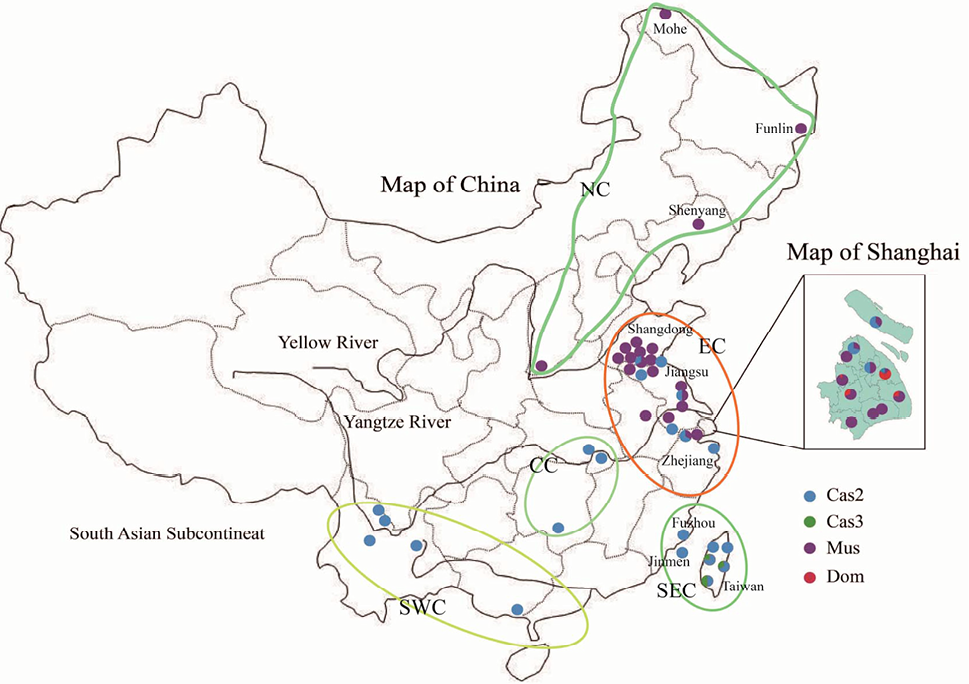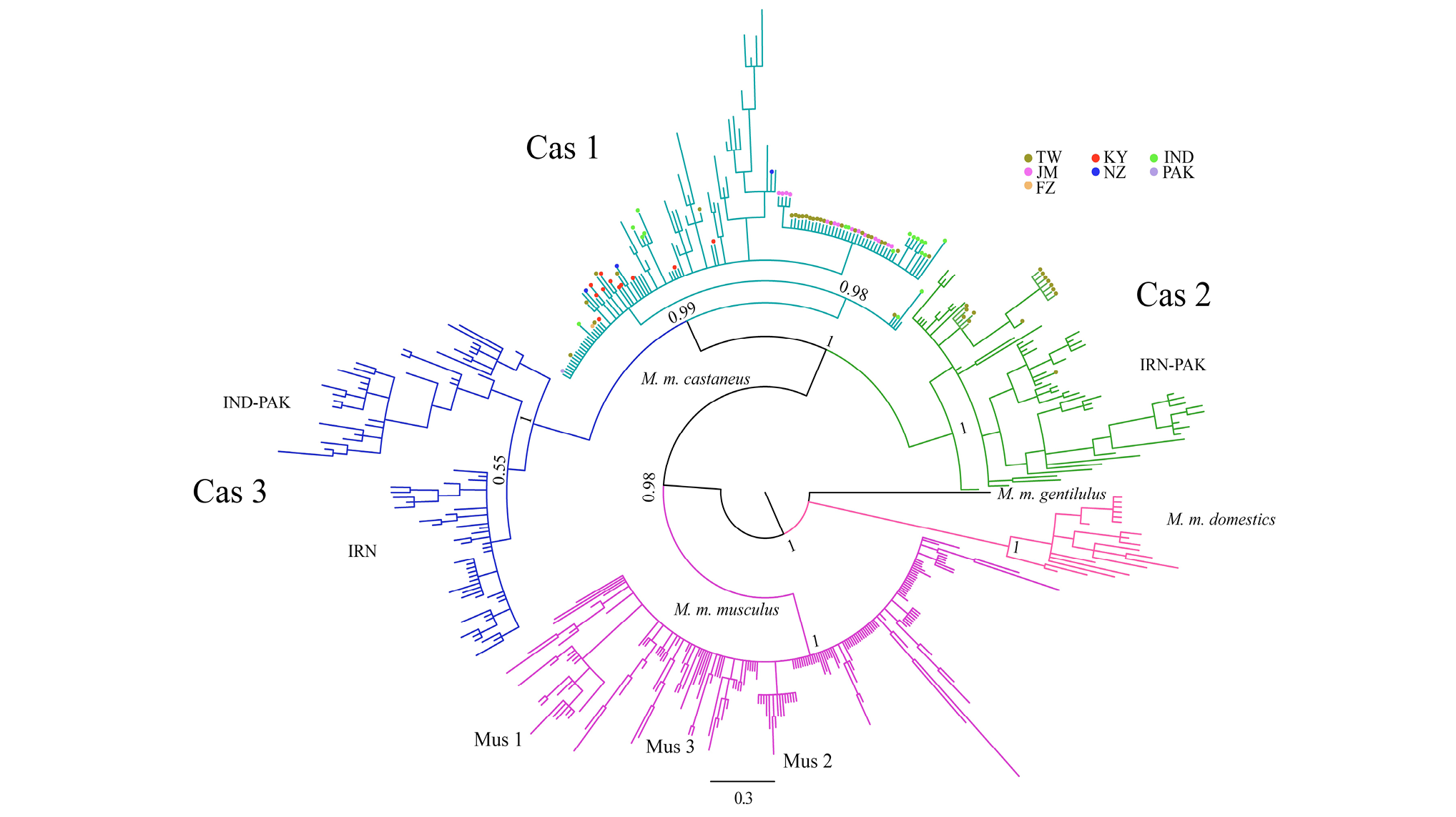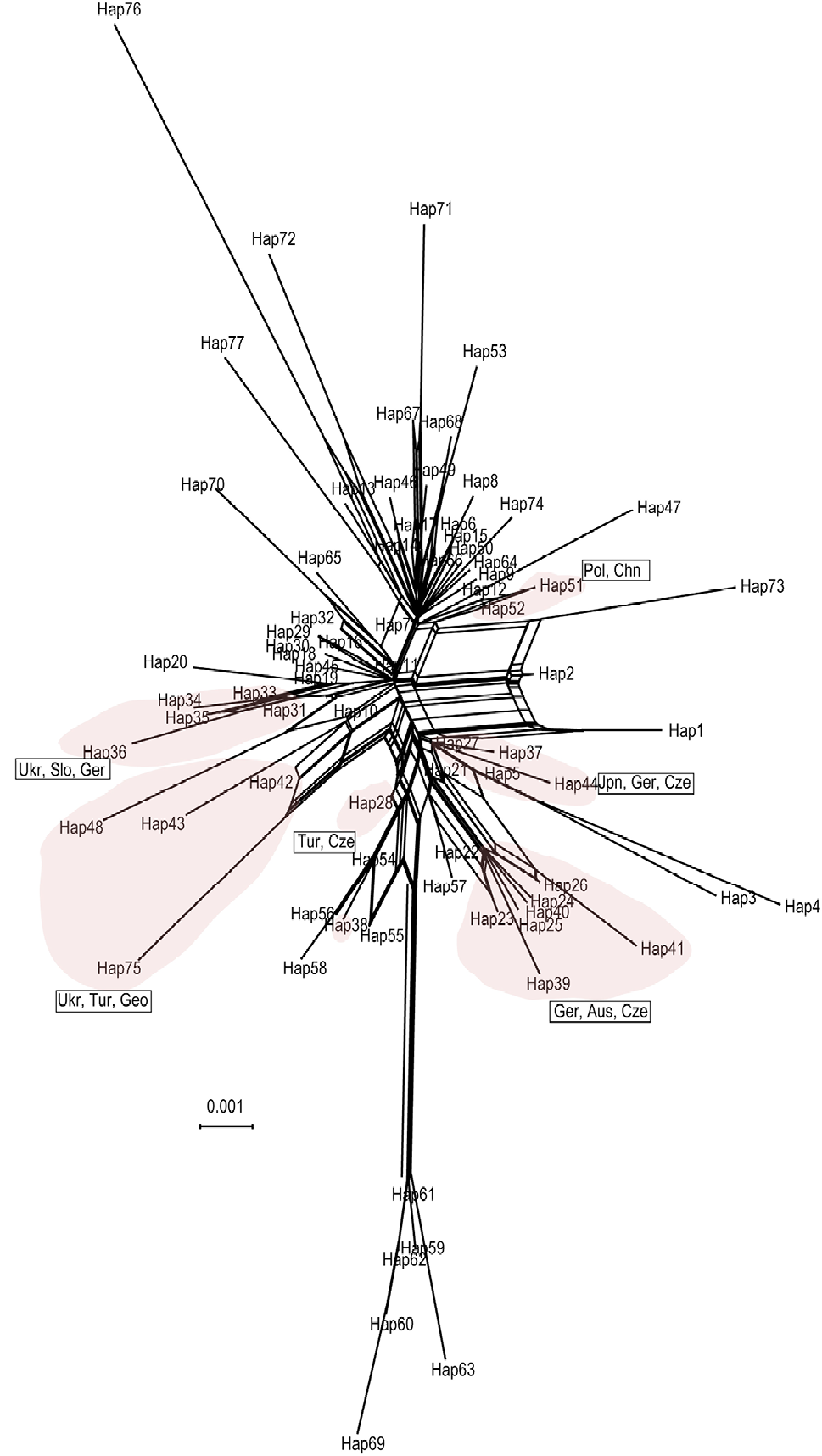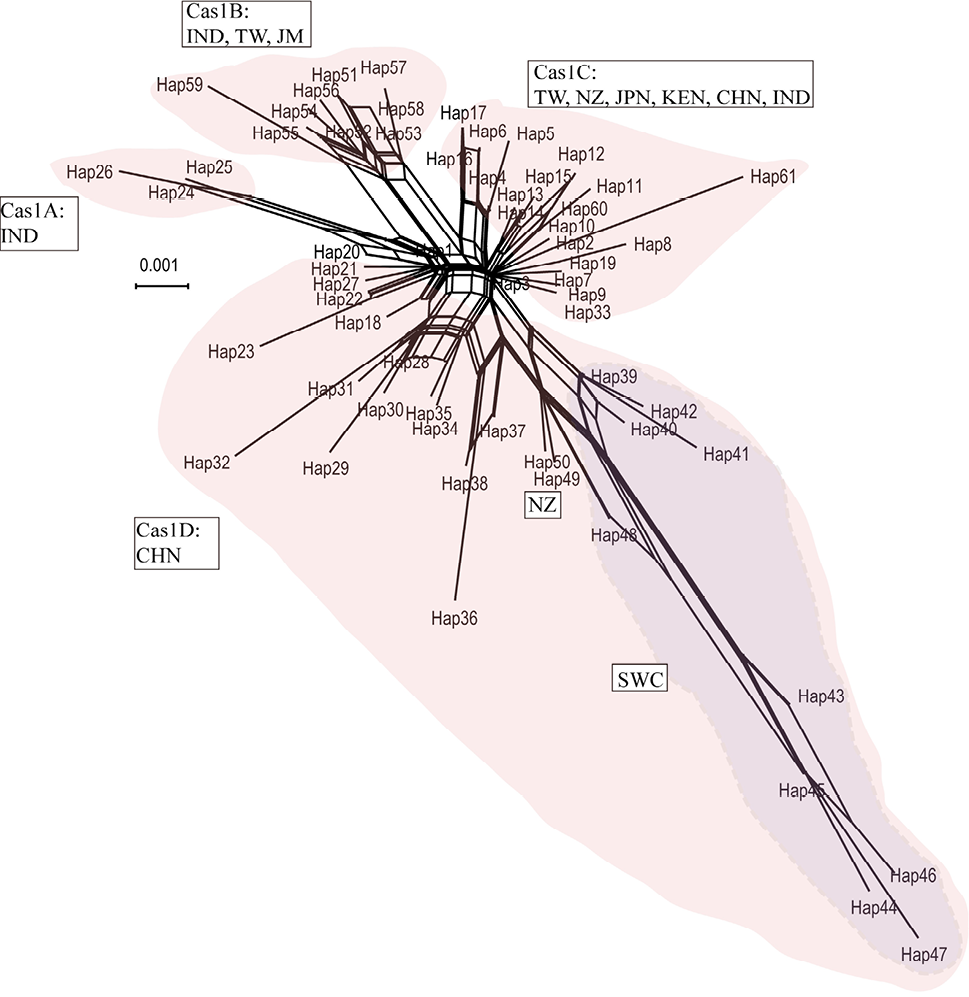Distribution of Subspecies of the House Mouse, Mus musculus (Rodentia: Muridae) in East China as Inferred from Mitochondrial D-loop Sequences
Distribution of Subspecies of the House Mouse, Mus musculus (Rodentia: Muridae) in East China as Inferred from Mitochondrial D-loop Sequences
Tianzhu Chao, Huiqiang Cai, Yuxun Zhou, Kai Li* and Junhua Xiao
Subspecies distributions of Mus musculus in China. Sampling locations are indicated. CAS1 and CAS2 are two main subclades of M. m. castaneus from Figure 2. Mus and Dom are used as abbreviations for M. m. musculus and M. m. domestics, respectively. The five main districts are southwest China (SWC), north China (NC), central China (CC), east China (EC) and southeast China (SEC).
MrBayes phylogeny with posterior probability values based on D-loop sequences from Mus musculus. The scale bar represents nucleotide substitutions per site. Clades and subclades are indicated. There are three main subclades in M. m. castaneus: CAS1, CAS2, and CAS3. All M. m. castaneus mice in mainland China are within the CAS1 clade (dark green branch), and there is no primary subclade for M. m. musculus (purple branch). Most samples from Taiwan (TW, the largest island in eastern China, which is close to Fuzhou, Fujian Province) are within CAS2, while samples from Fuzhou (FZ) and Jinmen (JM, Fujian Province) are in CAS1. KY, NZ, IND, and PAK are used as abbreviations for Kenya, New Zealand, India, and Pakistan, respectively.
NeighborNet tree of M. m. musculus haplotypes based on the mitochondrial DNA control region. Pol, Chn, Ukr, Slo, Ger, Geo, Tur, and Cze are used as abbreviations for Portugal, China, Ukraine, Slovenia, Germany, Georgia, Turkey, and Czech Republic, respectively. Haplotypes from the above regions are shaded. The remaining, unmarked haplotypes were all from China.
NeighborNet tree of clade CAS1 haplotypes of M. m. castaneus based on the mitochondrial DNA control regions. Tip labels from the four major subgroups were defined as CAS1A, CAS1B, CAS1C, and CAS1D and are indicated by light shading. A geographical group for SWC (southwest China) exists within CAS1D. KY, NZ, IND, JPN, CHN, TW, JM and SWC are used as abbreviations for Kenya, New Zealand, India, Japan, mainland China, Taiwan Island (China), and Jinmen Island (China), respectively.













